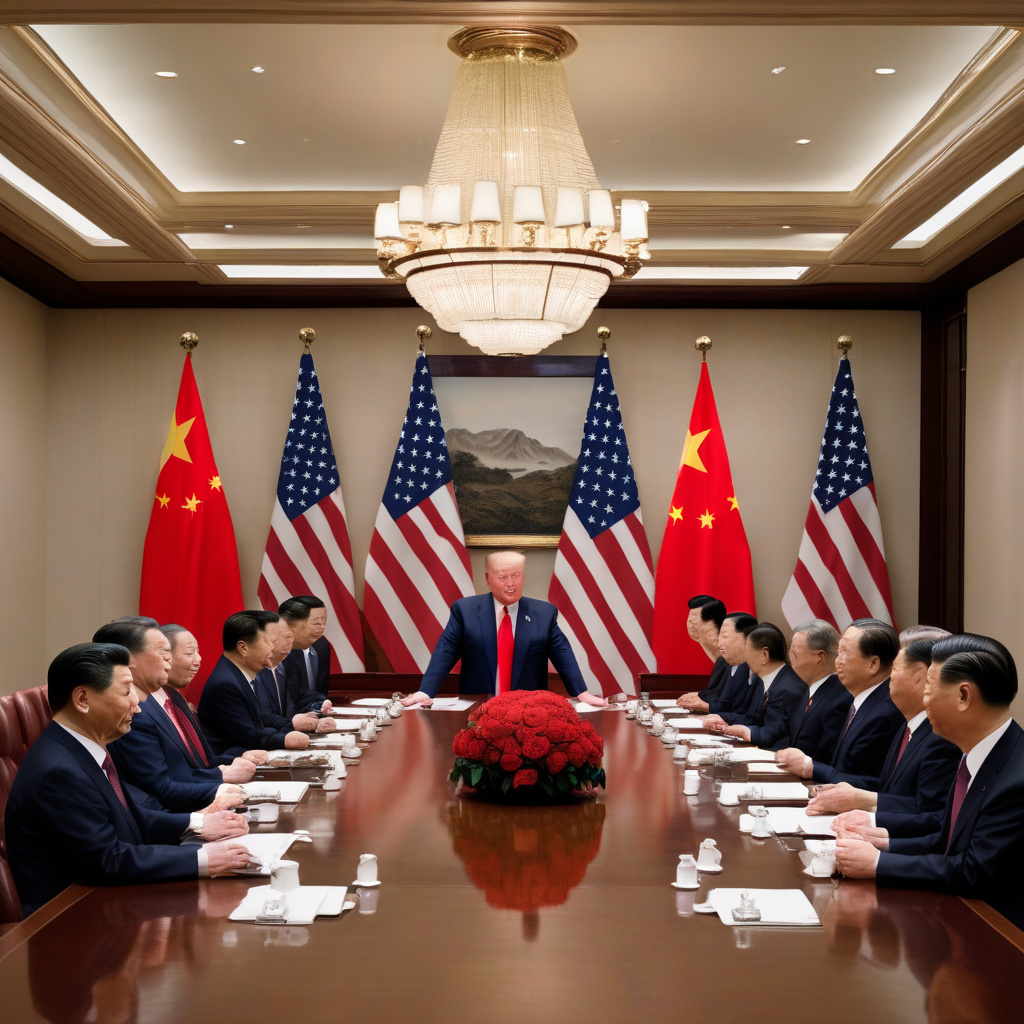Trump, Xi Set to Formalise Trade Truce After Months of Chaos
In a significant development that could reshape global trade dynamics, U.S. President Donald Trump and Chinese President Xi Jinping are reportedly preparing to formalize a trade truce after enduring months of tumultuous economic relations. The initial signals from both camps suggest that the two leaders are on the brink of a pact that may lead to a rollback of certain tariffs, fees, and export restrictions that have been a source of tension between the two economic giants.
The ongoing trade war, characterized by escalating tariffs and retaliatory measures, has had far-reaching consequences not just for the United States and China, but for the global economy as a whole. According to data from the World Bank, the trade conflict has contributed to a slowdown in global economic growth, affecting supply chains and consumer prices. As both countries seek stability, the implications of a formalized truce could be monumental.
One of the major components of the proposed agreement is the potential reduction of tariffs that have been imposed on a range of goods. For instance, the U.S. has levied tariffs on over $360 billion worth of Chinese imports, while China has retaliated with tariffs on American goods amounting to around $110 billion. A rollback of these tariffs could alleviate pressure on American consumers and businesses that have been grappling with increased costs. Companies such as Apple and Walmart have felt the brunt of these tariffs, which have affected pricing strategies and profit margins.
Moreover, easing export restrictions could foster a more conducive environment for trade between the two nations. Recent months have seen the U.S. implementing stringent export controls on high-tech goods, particularly those related to telecommunications and artificial intelligence. These measures have hindered the ability of American companies to compete in these lucrative markets. A truce that includes a commitment to lift some of these restrictions would not only benefit U.S. companies but could also foster technological collaboration between the two nations, sparking innovation and growth.
The potential agreement has been met with cautious optimism from business leaders and economists alike. Many are hopeful that a resolution to the trade conflict could restore investor confidence and stimulate growth in both economies. The U.S. Chamber of Commerce has emphasized the importance of a stable trade relationship, stating that “businesses need predictability to plan for the future.” A trade truce could provide that predictability, allowing companies to make informed decisions regarding investments and employment.
However, the path to formalizing this trade truce is not without its challenges. The negotiations have been fraught with complexities, as both parties must navigate domestic pressures and political considerations. For Trump, who is gearing up for the 2024 presidential election, a successful trade deal could serve as a pivotal talking point to highlight his administration’s accomplishments. Conversely, Xi faces scrutiny from Chinese citizens who expect economic reforms and improved living standards. Balancing these expectations while reaching a consensus on trade could prove to be a formidable task for both leaders.
In addition, external factors such as geopolitical tensions and the ongoing pandemic may complicate the negotiations. The recent rise in tensions regarding Taiwan and human rights issues could influence the dialogues surrounding trade, as both countries may use these topics as leverage in the negotiations. The complex interplay between trade and politics means that while a truce may be on the horizon, it remains to be seen how comprehensive and lasting such an agreement will be.
As the two leaders prepare to meet and discuss the details of this potential truce, the global business community watches closely. A successful agreement could not only stabilize U.S.-China relations but also set a precedent for how major economies can resolve their differences through dialogue rather than conflict. The implications of a trade truce extend beyond the immediate economic benefits; they could serve as a catalyst for a new chapter in international trade relations.
In conclusion, as Trump and Xi gear up to formalize a trade truce, the potential rollback of tariffs and easing of export restrictions could usher in a new era of cooperation between the U.S. and China. While the road ahead is fraught with challenges, the opportunity for mutual economic growth and stability remains a powerful motivator for both leaders. The world eagerly awaits the details of this agreement and its potential impact on global trade.
#TradeTruce #TrumpXi #GlobalEconomy #TariffRollback #InternationalTrade
